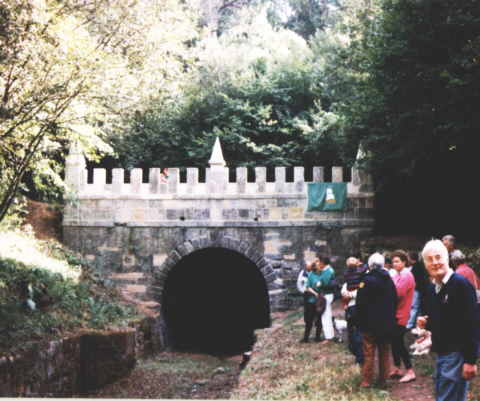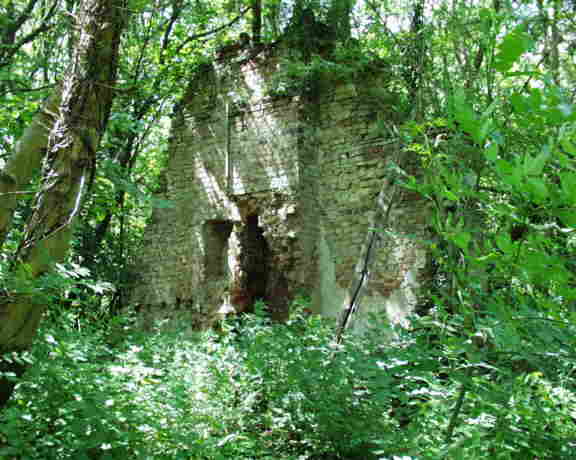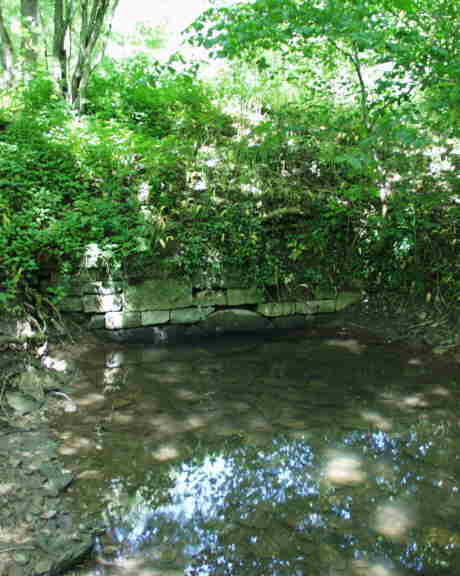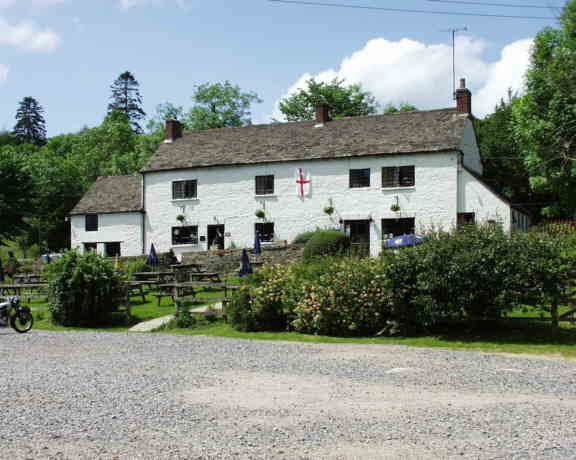Daneway Picture Gallery Back to T&S Canal Index

Daneway marks the western end of Sapperton Tunnel and the summit level of the T&S Canal. For a while in the 1780s, the nearby basin served as the eastern terminus of the canal during the construction of Sapperton Tunnel.
The Daneway Portal of Sapperton Tunnel was built in gothic style with battlements and is far simpler in design than the classical Coates Portal at the other end.

The Tunnel Keeper's cottage by the portal has all but disappeared - it was
intact but empty in the early 1980s but deteriorated thereafter. Its owner
recently reduced what was left to a pile of rubble - apparently with no planning
permission even though the building had significant historic significance
and was within the canal's industrial conservation area.

Shortly after leaving the tunnel, the canal passes over the River Frome on a small aqueduct. The canal was supplied by a number of feeders in this area and originally there was a reservoir built in the valley upstream of the canal in this area. However, the Frome usually dries up in this area during the summer and this water supply simply was not available at the times of the year when it was needed most.

The Daneway Inn marks the end of the summit and the top lock is currently buried under the pub car park. The Inn was originally built as a hostel for those building the tunnel and became the Bricklayer's Arms thereafter. Its adopted its current name long after the last boat passed in the second decade of the 20th century. Like the Tunnel House at Coates, it would have been used by the boatmen as well as men waiting to be hired to help the boats though the tunnel. Whether this was by legging (difficult given the variable width of the tunnel in places, especially for long (narrow) boats) or by poling against the canal bed (which was allowed provided the pole had a large flat end) or by pushing against the walls (which was not allowed), is lost in the mists of time. Either way, it is not that surprising that the pubs here were well used.
Daneway Bridge crosses the canal immediately below Daneway Upper Lock and survived attempts by the County Council to have it demolished in the early 1980s. The Trust, with the help of Earl Bathurst, had it listed at very short notice and the County then managed to repair the adjacent causeway from less that it would have cost to remove both it and the bridge. The County had previously argued that it would cost about three times as much to repair the causeway as to remove both it and the bridge.
Daneway Basin is located to the south of the canal between Daneway Upper and Daneway Lower Locks. It is of substantial size and served as the terminus for the canal during the late 1780s. It was given a concrete lining during the restoration of the canal around the beginning of the 20th century to prevent leakage. Some years ago, an unsympathetic landowner started infilling the basin with builders rubble by without planning permission. Having been informed that this was illegal, he accelerated the process confident that retrospective planning consent would be granted. He badly misjudged public opinion and his application was refused; he was forced to remove most of the infill at a ruinous cost - he sold up and left shortly thereafter.
Immediately after the entrance to the basin, the canal continues is descent through Daneway Lower Lock towards Stroud.
|
|
|
|
Maintained by: ken.burgin@pikelock.com |
Copyright © Ken Burgin 2002 - all rights reserved |